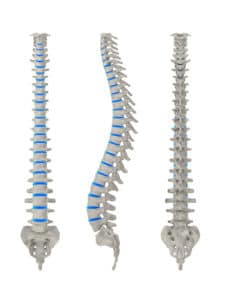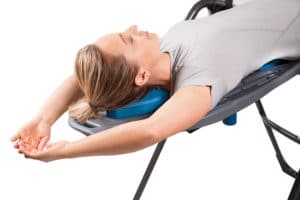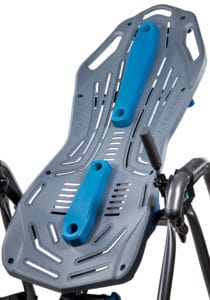More than people realize, poor posture has a huge impact on spinal health. If you suffer from back pain, tight shoulders, or neck pain, taking steps to correct your posture may bring you significant relief.
Here is a quick breakdown on the good, the bad, and the painful of poor posture. Learn how you can make everyday improvements to feel better, move better, and live better!
What is Good Posture?

Our spine has four natural curves that make up an ‘S’ shape. This natural curvature serves many functions to support our bodies:
- Acts as a shock-absorber to protect our body against vibrations and impact
- Supports balance
- Provides flexibility
- Offsets the weight of gravity
Benefits of Good Posture
When we promote good posture in our everyday activities, we feel the benefits:
- Reduced lower back pain
- Less tension in neck and shoulders
- Proper muscle function means less soreness
- Relieved pressure off the nerves
- Proper spinal curvature
- Increased energy levels
- Improved circulation and digestion
The Effects of Bad Posture
When we slouch our shoulders, hunch forward, and round in the lower back, we encourage bad posture. Oftentimes, the main culprits for bad posture and back pain are activities that we do every day. Pay attention to the way you sit at your desk, drive in the car, lounge on your sofa, and even how you sleep! These could be throwing you more out of alignment every day.
When we maintain bad posture for long periods of time, the effects can be detrimental:
- Lower back pain
- Shoulder and neck pain
- Sore muscles
- Improper spinal curvature
- Irritation & constriction of spinal nerves
- Poor circulation
- Digestive issues
- Increased stress
How to Improve Posture
The first step to improve posture is to adjust your sitting and standing habits:
- Try to keep a gentle lift in your core, don’t round in the low back, and relax the shoulders. This will help to reduce slouching.
- Keep your neck positioned directly over your shoulders, instead of cranked out in front of you. This will help relieve neck strain.
- Avoid “text neck” (looking down for too long at your phone or computer). If you work at a computer during the day, adjust your monitor/work station so that the computer is at eye-level.
- Avoid sitting for long periods of time without a break. Get up and walk around every hour to relieve pressure on the spine, or consider using a sit-stand desk.
Try the Posture Restore for Enhanced Realignment and Pain Relief

The Posture Restore is the perfect Teeter Inversion Table accessory to help you get your spine back into proper alignment.
The Posture Restore promotes extra posture correction to relieve pain in the upper and lower back, shoulders, and neck:
- Stretches the muscles that have shortened and adapted to a hunched posture.
- Helps to open the chest, shoulders, and hips.
- Decompresses and elongates the spine.
- Reverses the effects of “tech neck”, slouch sitting and poor desk posture!
Poor posture can have detrimental effects on spinal health. It’s important to know what activities are causing harm and how to improve posture so that you can restore wellness. Teeter designed the Posture Restore to help you relieve pain and stiffness from poor posture and realign your spine.
Restore Your Spine with the Posture Restore
Try the latest Teeter FitSpine accessory to relieve tension and promote better everyday posture.
